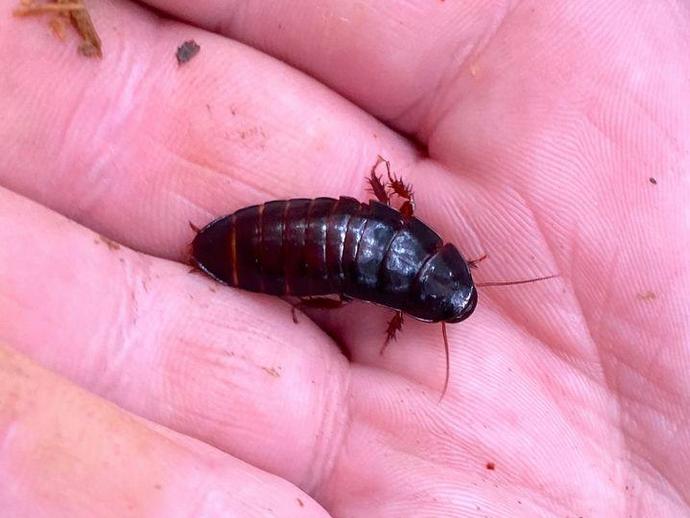December 28, 2021
We're reaching into the archives for today's #BenInNature update presented by our friends at Carter Bank & Trust! The following post was originally published on October 15, 2020.
Roaches rank pretty low when it comes to beloved insects, but believe it or not, you might actually like this roach (or at least respect it)! This is Cryptocercus punctulatus, also known as the wood roach or brown-hooded cockroach, and unlike a lot of roaches, it has no interest in moving into your home. In fact, it requires so much moisture and such specific conditions that it can't survive or breed inside your house!
The easiest way to tell that you have a wood roach on your hands is that they don't have wings. As the name suggests, wood roaches feed on rotting wood. However, they are physically incapable of digesting cellulose, which is a pretty big problem if you eat wood. They get around this limitation in the same way that cows do: wood roaches have cellulose-digesting microbes in their gut that converts cellulose to sugar!
What is most remarkable about these little guys is that unlike a lot of insects, they're quite devoted parents! When wood roaches reach sexual maturity, a male and a female will locate one another and take up residence inside a rotting log, which will probably be their home for the rest of their lives. After mating, the female will lay 50-100 eggs inside the log, and the male and female will stick together for several years raising their offspring!
Why do the mated pair of roaches stick together for so long to rear their offspring? There's a very good reason, and I hope you're not eating while you read it! While the adult roaches have the necessary gut microbes to digest rotting wood, the larvae do not. The adults pass the necessary microbes on to their larvae through a process called "proctodeal trophallaxis," which is when larvae obtain microbes by feeding on fluids from the anus of the adult.
Hey, I tried to warn you.
ABOUT #BenInNature
Social distancing can be difficult, but it presents a great opportunity to become reacquainted with nature. In this series of posts, Administrator of Science Ben Williams ventures outdoors to record a snapshot of the unique sights that can be found in the natural world. New updates are posted Monday - Friday, with previous posts highlighted on the weekends. This series of posts is made possible thanks to the support of VMNH Corporate Partner Carter Bank & Trust (www.cbtcares.com).
NATURE PHOTO IDENTIFICATIONS
If you discover something in nature that you would like help identifying, be sure to message us right here on Facebook with a picture (please include location and date of picture) and we'll have our experts help you identify it!

 Hours & Admissions
Hours & Admissions Directions
Directions

